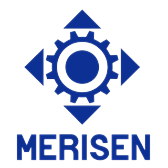
Comprehensive Guide to Hydrodynamic Couplings Selection for Industrial Applications
2025-08-22 09:05Comprehensive Guide to Hydrodynamic Couplings Selection for Industrial Applications
August 22, 2025
Introduction
In the rapidly evolving industrial machinery sector, hydrodynamic couplings have emerged as a cornerstone technology for optimizing power transmission systems. These devices, renowned for their ability to mitigate mechanical shocks and enhance operational efficiency, are pivotal in industries ranging from mining to energy production. This article provides an in-depth analysis of hydrodynamic couplings selection criteria, technological advancements, and real-world applications, ensuring engineers and decision-makers can make informed choices.
1. Understanding Hydrodynamic Couplings: Principles and Types
Hydrodynamic couplings operate on fluid dynamics principles, transferring torque through a working fluid (typically oil or water) between an input and output shaft. This design eliminates direct mechanical contact, reducing wear and enabling smooth startup under heavy loads .
Key Types
Constant-Fill Couplings: Ideal for applications requiring fixed torque transmission, such as conveyor systems .
Fill-Controlled Couplings: Allow adjustable fluid levels to modulate torque, suited for variable-speed machinery .
Diesel-Specific Couplings: Engineered for combustion engines to dampen torsional vibrations .
2. Critical Factors in Hydrodynamic Couplings Selection
Selecting the right hydrodynamic couplings requires evaluating:
Load Characteristics: High-inertia systems (e.g., crushers) demand couplings with robust shock absorption.
Power Requirements: Align coupling size with motor power; undersized units risk overheating .
Environmental Conditions: Harsh environments (e.g., mining) necessitate corrosion-resistant materials.
Maintenance Needs: Opt for sealed designs in dust-prone settings to reduce servicing frequency .
3. Technological Innovations Driving the Market
Recent advancements include:
Smart Sensors: Real-time monitoring of fluid temperature and pressure to prevent failures.
Eco-Friendly Fluids: Biodegradable oils reduce environmental impact without compromising performance .
Modular Designs: Enable quick customization for niche applications, such as urban flood management pumps .
4. Case Studies: Hydrodynamic Couplings in Action
Case 1: Mining Conveyor Systems
A South African mining company reduced downtime by 40% after switching to fill-controlled hydrodynamic couplings, which handled abrupt load changes seamlessly .
Case 2: Power Plant Turbines
Voith’s constant-fill couplings improved energy efficiency by 15% in a German coal-fired plant, showcasing their reliability in high-torque scenarios .
5. Future Trends and Industry Outlook
The global hydrodynamic couplings market is projected to grow at 6.2% CAGR through 2030, driven by renewable energy and automation demands. Emerging applications in hydropower and electric vehicle manufacturing highlight their versatility .
Conclusion
As industries prioritize efficiency and sustainability, hydrodynamic couplings remain indispensable. By leveraging advanced selection strategies and embracing innovations, businesses can unlock significant operational gains. For detailed technical specifications, readers are encouraged to consult sources like Voith’s product manuals or the Journal of Fluid Mechanics .
For further inquiries, contact: info@mrscouplings.com
